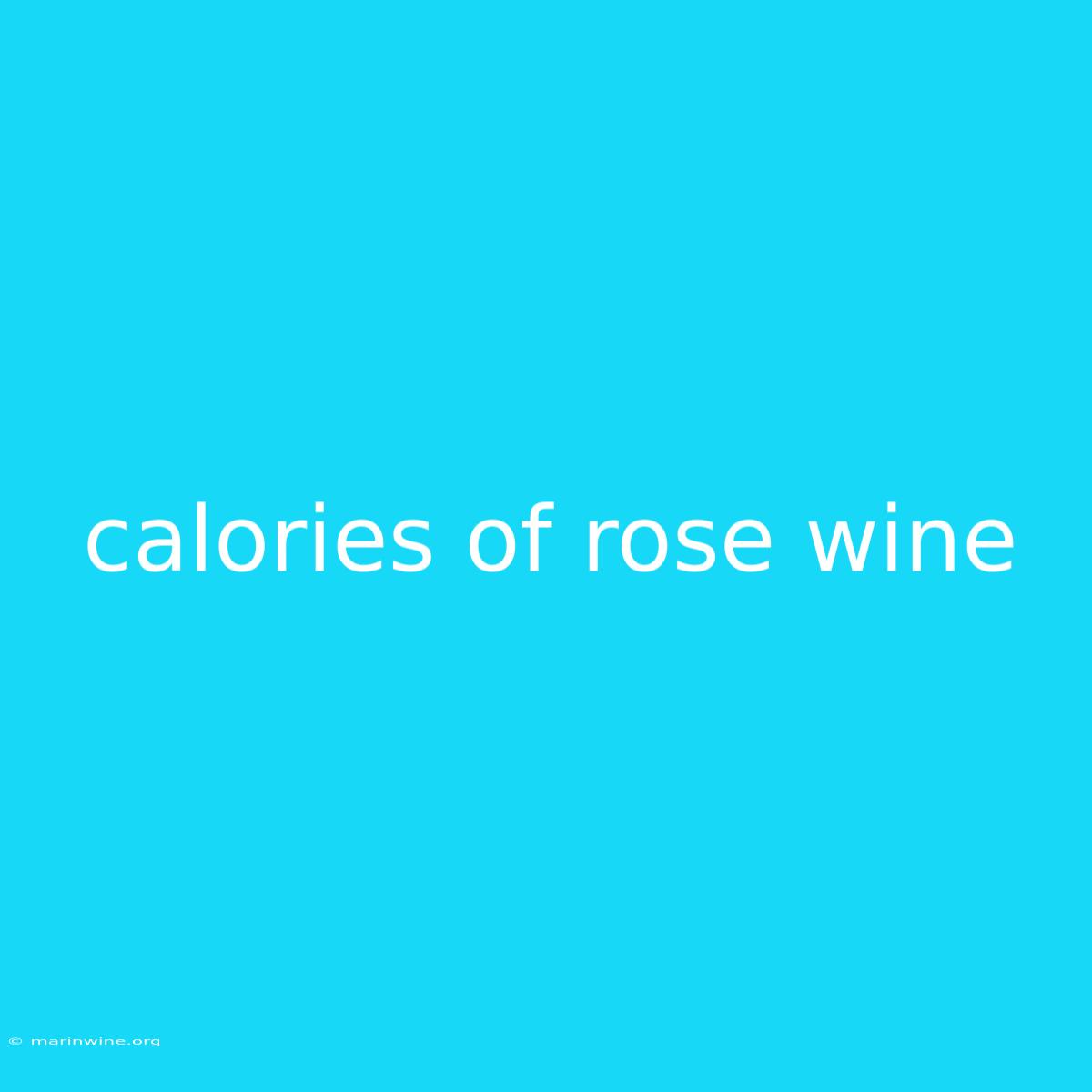Uncorking the Calories: A Deep Dive into Rose Wine
Have you ever wondered how many calories lurk in your favorite glass of rosé? It's a question many wine enthusiasts ponder, especially those seeking a guilt-free indulgence. This article will delve into the caloric content of rosé wine, exploring its factors and helping you make informed choices.
Why It Matters:
Understanding the calorie count of rosé is crucial for maintaining a healthy lifestyle. With increasing awareness of nutrition and weight management, knowing the calorie content of your beverages is essential for making informed choices. This article will delve into the factors that influence the calorie content of rosé, highlighting its nuances and providing a comprehensive overview.
Key Takeaways of Rose Wine Calories
| Factor | Impact on Calories |
|---|---|
| Type of Rosé | Sweet vs. Dry |
| Alcohol Content | Higher ABV = More Calories |
| Serving Size | Larger Pour = More Calories |
| Production Method | Varied Calorie Count |
Rose Wine: A Delicate Dance of Flavors and Calories
Rosé wine, known for its vibrant pink hues and refreshing palate, is a beloved summer beverage. But like any alcoholic drink, its calorie content can vary significantly.
Factors Influencing Rosé Calories:
- Sweetness: Sweet rosés, often made from fruit-forward grapes, tend to be higher in calories due to added sugar. Dry rosés, on the other hand, typically contain fewer calories.
- Alcohol Content: Rosé wines, like other wines, have varying alcohol by volume (ABV). Higher ABV generally translates to more calories.
- Serving Size: The amount you pour can drastically affect the total calories consumed. A smaller pour, like 4 ounces, will contain fewer calories compared to a standard 5-ounce pour.
Understanding the Production Method:
The production method plays a role in the calorie content of rosé wine. Different techniques, such as skin contact time and fermentation methods, can influence the final sweetness and alcohol content, impacting the calorie count.
Delving Deeper into Sweetness and Calories:
- Sweet Rosés: These rosés have a noticeable sweetness, resulting from residual sugar remaining after fermentation. The sugar content contributes significantly to the calorie count, often exceeding 150 calories per glass.
- Dry Rosés: Dry rosés, characterized by their dryness and crispness, usually contain lower calories due to their minimal residual sugar content. Expect around 120-140 calories per glass, depending on the alcohol content.
Alcohol Content: A Major Player in Calorie Calculation:
While the type of rosé and sweetness play a role, alcohol content is a primary factor in calorie content. As the alcohol content increases, the calorie count rises.
Practical Applications: Making Informed Choices:
- Opt for Dry Rosés: When aiming for lower calories, choose dry rosés with a lower ABV.
- Control Serving Size: Smaller pours (4 ounces) help manage calorie intake.
- Enjoy Responsibly: Moderate consumption is key to maintaining a healthy weight.
FAQ for Rosé Wine Calories
Q: Is rosé wine healthier than red or white wine? A: The calorie content of rosé, red, and white wines varies depending on the type and alcohol content. No single wine type is inherently healthier than the others.
Q: Does rosé wine make you gain weight? A: Calories from any alcoholic beverage can contribute to weight gain if consumed excessively. Moderate consumption and balanced dietary choices are crucial.
Q: How can I track the calorie intake of my rosé wine? A: Most wine labels provide information about the alcohol content. Online calorie calculators can help estimate the calorie content based on the serving size and ABV.
Tips for Enjoying Rosé Wine Wisely:
- Embrace Variety: Explore different styles of rosé, from dry and crisp to fruity and sweet.
- Consider the Occasion: Match the style of rosé to your occasion. A light and dry rosé might be ideal for a casual dinner, while a sweet rosé could be perfect for a celebratory occasion.
- Listen to Your Body: Pay attention to your calorie intake and adjust your consumption accordingly.
Summary of Rosé Wine Calories:
This article explored the calorie content of rosé wine, highlighting the factors that influence its calorie count. Understanding the nuances of rosé production, sweetness, and alcohol content empowers you to make informed choices about your wine selection and enjoy a balanced lifestyle.
Closing Message:
With a greater awareness of the calorie content of rosé wine, you can make informed decisions about your beverage choices. Remember, enjoying wine should be a pleasurable experience, and by understanding its nuances, you can savor its delicate flavors while maintaining a healthy lifestyle. Cheers to responsible and informed wine enjoyment!

